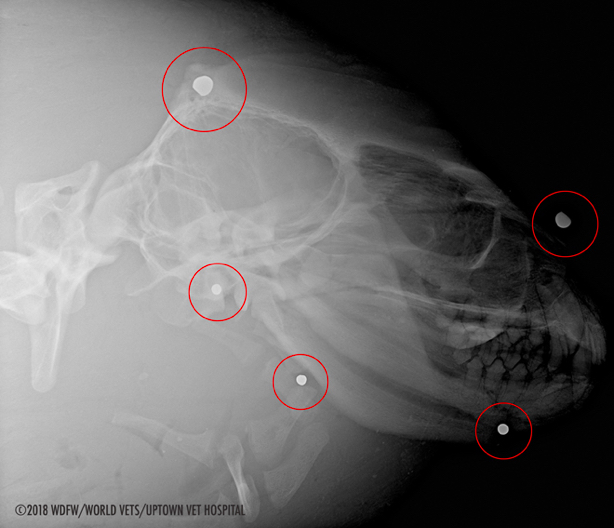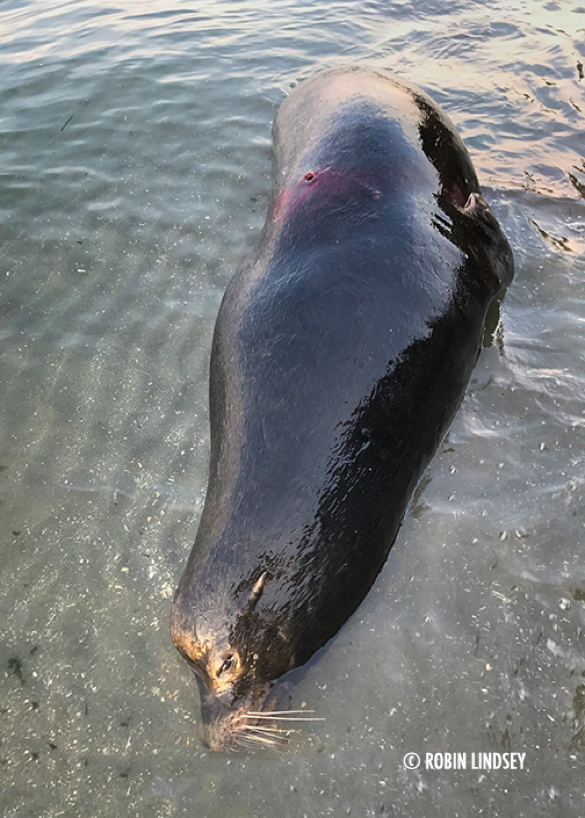Dec 2018
Latest numbers - shot sea lion count increases to 12
Dec/07/18 02:43 PM
 LATEST UPDATE 12/7/18 2:45PM
LATEST UPDATE 12/7/18 2:45PMThese numbers are ever increasing. Please check back frequently for updated statistics.
THE LATEST STATS
The number of reported dead sea lions now totals 18 in King and Kitsap counties of Puget Sound for the period September to date in December 2018. Additionally, there are reports of several dead animals in neighboring counties. The Marine Mammal Stranding Network is gathering data from those counties and that information will be shared when possible. The animals (based on either exam or photos and body condition) are suspected to have died from acute trauma. Acute trauma can be caused by a number of incidents, including human interaction (shooting, boat strike, etc) or killer whale/shark attack.
Following the necropsies on 12/4 and 12/5 of two decomposed sea lion carcasses that came ashore in West Seattle, the latest number of confirmed shot sea lions in King and Kitsap counties now totals 12. Both animals were shot in the head.
We want to emphasize that these latest few cases were in advanced decomposition and are not newly shot animals, just newly found. They were likely killed during September/October and early November when the clusters of shootings seem to have occurred.
The head of another sea lion in West Seattle on Friday, 11/30, was X-rayed, confirming the animal had been shot, as well as an Indianola sea lion who was confirmed shot dead on 11/29. The one investigated 11/25 on Vashon Island was necropsied the following day. X-rays of the skull revealed projectiles. The decomposing sea lion carcass found Thanksgiving Day wedged against the West Seattle Water Taxi dock has been confirmed shot as well. These are just the most recent victims of violence. The radiograph above is the skull of the sea lion necropsied in West Seattle on the 15th, showing 5 shotgun pellets of 2 different calibers lodged in the head.
The California sea lion below was shot in the back, suffering massive injuries to internal organs and a slow death.
 THE RESPONSE
THE RESPONSEThe response to these dead animals has been a collaborative effort on the part of several partners in NOAA’s Marine Mammal Stranding Network, those who cover the extensive coastline of Central and South Puget Sound: Washington Department of Fish and Wildlife Marine Mammal Investigations (WDFW-MMI), Sno-King Marine Mammal Response and Seal Sitters MMSN. Seattle-based organization SR3 has provided invaluable support to the Network.
THE CHALLENGES
WDFW-MMI does the bulk of all pinniped (seals and sea lions) necropsies in Puget Sound and the outer Pacific coast of Washington.
Because an EPA permit is required to tow and sink a dead marine mammal (which has taken days to weeks), that causes delays in the ability to promptly necropsy a sea lion because of disposal issues. You can’t leave a cut up 600 lb animal carcass on private or public beach. It either needs to be towed out to sea and sunk at an approved lat/long or disposed of onshore. Often, there is no vehicle access and even if so, there are limited resources to pay for heavy equipment burial onsite - or for rendering at a plant. Rarely can a cut up carcass be left onshore - only in remote locations. For these reasons, some of the animals who could not be secured have disappeared with the tides before a necropsy could be done.
The Stranding Network thanks the region’s veterinarians for assistance in providing radiographs of heads taken to their clinics. Often, a radiograph is the only means to locate a bullet lodged in an animal. A portable, battery-powered X-ray machine used in the field would reveal instantly if there were shot pellets. Then, the animal could remain intact while awaiting necropsy and the EPA permit for disposal, but at least in the interim a diagnosis would have been confirmed. However, at a cost of $25-30k, obtaining one is far out of reach with slashed marine mammal response budgets.
For all related shot sea lion posts, click here.







